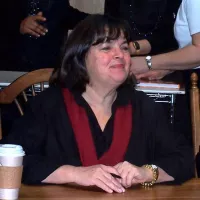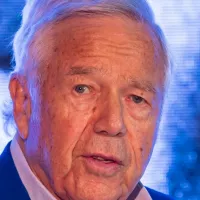Amelia Earhart was a groundbreaking American aviation pioneer who vanished over the Pacific Ocean in 1937 during an attempt to circumnavigate the globe. She was the first woman to fly solo non-stop across the Atlantic Ocean and established numerous other aviation records. Beyond her flying achievements, Earhart championed commercial air travel, authored best-selling books detailing her experiences, and played a key role in establishing the Ninety-Nines, an organization for female pilots. Her life and disappearance have made her a lasting cultural icon, symbolizing adventure and women's empowerment.
1904: Construction of a Homemade Roller Coaster
In 1904, with the help of her uncle, Amelia Earhart constructed a home-made ramp that was fashioned after a roller coaster she had seen on a trip to St. Louis, Missouri, and secured it to the roof of the family tool shed. She emerged from her first flight with a bruised lip, a torn dress and a "sensation of exhilaration".
1907: Family Transfer to Des Moines, Iowa
In 1907, Edwin Earhart's job as a claims officer for the Rock Island Railroad led to the family's transfer to Des Moines, Iowa, marking a change in their living environment.
1909: Enrollment in Public School
In 1909, the Earhart children were enrolled in public school for the first time in Des Moines, Iowa. Amelia, at the age of 12, entered seventh grade, marking a significant transition from homeschooling.
1912: Death of Grandfather Alfred Gideon Otis
In 1912, Amelia Earhart's maternal grandfather, Alfred Gideon Otis, who was a former judge and president of Atchison Savings Bank, passed away.
1913: Birth of David Binney Putnam
In 1913, David Binney Putnam, the explorer and writer, was born. He was George Palmer Putnam's son from his previous marriage to Dorothy Binney.
1914: Financial Difficulties and Loss of Inheritance
In 1914, Edwin Earhart was forced to retire due to alcoholism, and Amelia's grandmother, Amelia Otis, passed away, leaving a substantial estate in a trust for her daughter to protect it from Edwin's drinking habits. The Otis house was auctioned along with its contents.
1915: Move to St. Paul and Schooling in Chicago
In 1915, Edwin Earhart found work in St. Paul, Minnesota, and Amelia entered Central High School. Later, Amy Earhart took her children to Chicago, where Amelia enrolled in Hyde Park High School after carefully selecting it for its superior science program.
1916: Graduation from Hyde Park High School
In 1916, Amelia Earhart graduated from Hyde Park High School. Throughout her childhood, she aspired to a career and kept a scrapbook of newspaper clippings about successful women in male-dominated fields.
1917: Service as a Nurse's Aide
During Christmas vacation in 1917, Amelia Earhart visited her sister in Toronto, Canada, and witnessed wounded soldiers returning from World War I. She trained as a nurse's aide with the Red Cross and worked at Spadina Military Hospital, where she developed an interest in flying after hearing stories from military pilots.
December 1918: Discharge from Hospital after Spanish Flu
In December 1918, Amelia Earhart was discharged from Spadina Military Hospital, about two months after contracting the 1918 Spanish flu and being hospitalized for pneumonia and maxillary sinusitis.
1919: Enrollment at Smith College and Columbia University
In 1919, Amelia Earhart prepared to enter Smith College but changed her plans and enrolled in medical studies and other programs at Columbia University.
1919: Alcock and Brown's Non-Stop Transatlantic Flight
In 1919, Sir Arthur Whitten Brown, alongside John Alcock, completed the first non-stop transatlantic flight.
December 28, 1920: Attended Aerial Meet
On December 28, 1920, Amelia Earhart and her father attended an "aerial meet" at Daugherty Field in Long Beach, California, where she inquired about passenger flights and flying lessons.
January 3, 1921: First Flying Lesson
On January 3, 1921, Amelia Earhart had her first flying lesson at Kinner Field with Neta Snook. To afford the lessons, she worked various jobs and saved $1,000.
1921: Birth of George Palmer Putnam Jr.
In 1921, George Palmer Putnam Jr. was born. He was George Palmer Putnam's son from his previous marriage to Dorothy Binney.
October 22, 1922: World Record for Female Pilots
On October 22, 1922, Amelia Earhart flew her Airster to an altitude of 14,000 feet, setting a world record for female pilots, showcasing her skill and determination in aviation.
May 16, 1923: Pilot's License Issued
On May 16, 1923, Amelia Earhart became the 16th woman in the United States to be issued a pilot's license (#6017) by the Fédération Aéronautique Internationale (FAI), marking a significant milestone in her aviation career.
1924: Hospitalization for Sinus Operation and Other Ventures
In 1924, Amelia Earhart was hospitalized for another unsuccessful sinus operation due to her worsening sinus problem. During this time, she also tried setting up a photography company and other ventures.
1924: Transcontinental Trip with Mother
In 1924, following her parents' divorce, Amelia Earhart drove her mother in her "Yellow Peril" on a transcontinental trip from California, with stops throughout the western United States and northward to Banff, Alberta, Canada.
1925: Employment as a Teacher and Social Worker
In 1925, Amelia Earhart found employment as a teacher and later as a social worker at Denison House, a Boston settlement house, while living in Medford, Massachusetts.
1927: First Official Flight out of Dennison Airport
In 1927, Amelia Earhart flew the first official flight out of Dennison Airport in Quincy, Massachusetts, and also worked as a sales representative for Kinner Aircraft in the Boston area.
1927: Inspired by Charles Lindbergh's Flight
In 1927, Charles Lindbergh's successful solo transatlantic flight inspired American heiress Amy Phipps Guest to want to become the first woman to cross the Atlantic by air.
March 1928: Amy Phipps Guest's Aviation Team Assembly
In March 1928, Amy Phipps Guest assembled a team of aviation professionals, including pilot Wilmer Stultz, to support her endeavor to become the first woman to cross the Atlantic by air.
April 1928: Putnam's Quest to Find the "Right Sort of Girl"
In April 1928, George Palmer Putnam learned of Amy Guest's planned transatlantic attempt and, with Hilton Railey, took on the task of finding the "right sort of girl" for the flight, leading them to Amelia Earhart.
June 3, 1928: Friendship's Transatlantic Journey Begins
On June 3, 1928, after several unsuccessful attempts, the Friendship, with adjustments to reduce weight and the departure of Lou Gower, successfully took off from East Boston to begin its transatlantic journey to Trepassey, Newfoundland.
June 1928: Departure from Burry Port Harbour
In June 1928, Friendship departed Burry Port Harbour beginning the final leg of its journey to Southampton. A potentially historic meeting between Amelia Earhart and Sir Arthur Whitten Brown, who had completed the first non-stop transatlantic flight, was narrowly missed due to a miscommunication during departure.
July 6, 1928: Ticker-Tape Parade in New York City
On July 6, 1928, Amelia Earhart and the crew of Friendship were honored with a ticker-tape parade along the Canyon of Heroes in New York City to celebrate the first successful transatlantic flight by a woman.
August 1928: Solo Flight Across North America
In August 1928, Amelia Earhart became the first woman to fly solo across the North American continent and back.
August 1928: Earhart's transcontinental record flight
In August 1928, Amelia Earhart completed a transcontinental record flight using an Avro Avian aircraft, which was later retraced in 2001 by Carlene Mendieta as a commemorative flight.
November 23, 1928: Broken Engagement with Samuel Chapman
On November 23, 1928, Amelia Earhart broke off her engagement with Samuel Chapman, a chemical engineer from Boston.
1928: Lecture Tour and Endorsements
Immediately after her return to the United States in 1928, Amelia Earhart undertook an exhausting lecture tour and accepted media endorsements for products, including luggage.
1928: Earhart becomes aviation editor for Cosmopolitan
In 1928, Amelia Earhart became the aviation editor for Cosmopolitan, marking a significant role in her writing career.
1928: First female passenger to cross the Atlantic by airplane
In 1928, Amelia Earhart became the first female passenger to cross the Atlantic by airplane, gaining celebrity status following this event.
1929: Acknowledgment as a Skilled Pilot
In 1929, Amelia Earhart's piloting skills and professionalism were acknowledged by experienced professional pilots who flew with her.
1929: Heavy Promotion and Lucky Strike Deal
In 1929, George Putnam heavily promoted Amelia Earhart, which included publishing a book she wrote, organizing a series of new lecture tours, and using her pictures in media endorsements. Earhart accepted a Lucky Strike cigarettes endorsement deal to support Richard Evelyn Byrd's imminent expedition to the South Pole.
1929: Putnam's Divorce
In 1929, George Putnam, known as GP, was divorced and started pursuing Amelia Earhart, proposing to her six times before she agreed to marry him.
1929: Promoting Air Travel and Women's Role
In 1929, Transcontinental Air Transport (TAT) appointed Amelia Earhart and Margaret Bartlett Thornton to promote air travel, particularly for women, and Earhart helped set up the Ludington Airline, the first regional shuttle service between New York and Washington, D.C.
1929: Meeting of Female Pilots
In 1929, following the Women's Air Derby, Amelia Earhart called a meeting of female pilots to form an organization. She suggested the name Ninety-Nines, based on the number of charter members.
1930: Promotion of Women's Records in Aviation
In 1930, Amelia Earhart became an official of the National Aeronautic Association, and in this role, she promoted the establishment of separate women's records in aviation.
1930: First President of Ninety-Nines
In 1930, Amelia Earhart became the first president of the Ninety-Nines, an organization of female pilots providing moral support and advancing the cause of women in aviation.
1930: Earhart ends role as aviation editor for Cosmopolitan
In 1930, Amelia Earhart ended her role as the aviation editor for Cosmopolitan, concluding her two-year tenure with the magazine.
1930: Death of Samuel "Edwin" Stanton Earhart
In 1930, Amelia Earhart's father, Samuel "Edwin" Stanton Earhart, passed away.
February 7, 1931: Marriage to George P. Putnam
On February 7, 1931, Amelia Earhart married her public relations manager George P. Putnam in a marriage of convenience at Putnam's mother's house in Noank, Connecticut.
April 8, 1931: World Altitude Record in Autogyro
On April 8, 1931, Amelia Earhart set a world altitude record of 18,415 feet (5,613 m) flying a Pitcairn PCA-2 autogyro she borrowed from the Beech-Nut Chewing Gum company.
May 20, 1932: Earhart's Solo Flight Attempt to Paris
On May 20, 1932, Amelia Earhart, at age 34, departed from Harbour Grace, Newfoundland, in her Lockheed Vega 5B, aiming to fly solo to Paris. She carried a copy of the Telegraph-Journal to verify the flight's date. After contending with adverse conditions, she landed in a pasture near Derry, Northern Ireland, after a 14-hour and 56-minute flight.
1932: Preparing for Solo Transatlantic Flight
By 1932 Amelia Earhart's visibility in the media helped redefine public perceptions of women in aviation and paved the way for her subsequent solo transatlantic flight.
1932: Helping Isabel Ebel
In 1932 Isabel Ebel helped Earhart. In 1934, Earhart interceded on Isabel Ebel's behalf to be accepted as the first woman student of aeronautical engineering at New York University (NYU).
1932: First woman to make a nonstop solo transatlantic flight
In 1932, Amelia Earhart achieved the milestone of becoming the first woman to make a nonstop solo transatlantic flight, for which she was awarded the Distinguished Flying Cross.
November 1934: Fire at the Putnam Residence
In November 1934, while Amelia Earhart was away on a speaking tour, a fire occurred at the Putnam residence in Rye, destroying many family treasures and personal mementos. Following the fire, the couple decided to move to the west coast.
1934: Intervening for Isabel Ebel's Admission to NYU
In 1934, Amelia Earhart interceded on behalf of Isabel Ebel, to be accepted as the first woman student of aeronautical engineering at New York University (NYU).
1934: Refusal to Participate in Bendix Trophy Race
In 1934, after the Bendix Trophy Race banned women from competing, Amelia Earhart refused to fly screen actor Mary Pickford to Cleveland to open the race.
January 11, 1935: First Solo Flight from Honolulu to Oakland
On January 11, 1935, Amelia Earhart became the first aviator to fly solo from Honolulu, Hawaii, to Oakland, California, using a Lockheed 5C Vega. The flight was mostly routine, and she listened to a Metropolitan Opera broadcast during the final hours.
April 19, 1935: Solo Flight from Los Angeles to Mexico City
On April 19, 1935, Amelia Earhart flew solo from Los Angeles to Mexico City using her Lockheed Vega aircraft, nicknamed "old Bessie, the fire horse".
June 1935: Putnam Purchases a House in Toluca Lake
In June 1935, at Amelia Earhart's urging, George Putnam purchased a small house in Toluca Lake, a celebrity enclave between the Warner Brothers and Universal Pictures studio complexes.
September 1935: Establishment of Earhart-Mantz Flying School
In September 1935, Amelia Earhart and Paul Mantz established the Earhart-Mantz Flying School, controlled by Mantz. Also in September 1935, Earhart joined Purdue University as a visiting faculty member and technical advisor.
1935: Recognizing the limitations of the Lockheed Vega
By 1935, Amelia Earhart recognized the limitations of her Lockheed Vega for long, transoceanic flights and started contemplating a circumnavigation of the globe and would need a new aircraft.
1935: Visiting faculty member of Purdue University
In 1935, Amelia Earhart joined Purdue University as a visiting faculty member. She served as an advisor in aeronautical engineering and as a career counselor to female students, contributing to education and women's causes.
1935: Participation in the Bendix Trophy Air Race
In 1935, Amelia Earhart participated in the Bendix Trophy long-distance air race, finishing fifth due to her Lockheed Vega being slower than the purpose-built aircraft. The race was marred by the death of a competitor and challenging weather conditions.
1935: "Earhart Tree" planted in Hawaii
In 1935, Amelia Earhart planted the "Earhart Tree" on Banyan Drive in Hilo, Hawaii, which stands as a living memorial.
1935: Linda Finch retraces Earhart's final flight path
In 1997, on the 60th anniversary of Amelia Earhart's round-the-world flight attempt, San Antonio businesswoman Linda Finch retraced Earhart's final flight path using a restored 1935 Lockheed Electra 10.
July 1936: Lockheed Aircraft Company built the Lockheed Electra 10E
In July 1936, Lockheed Aircraft Company built the Lockheed Electra 10E airplane, funded by Purdue University's Amelia Earhart Fund for Aeronautical Research, with extra fuel tanks and other modifications. Amelia Earhart called it her "flying laboratory".
1936: Planning to Fly Around the World
Early in 1936, Amelia Earhart started planning a 29,000-mile flight around the world along an equatorial route, with the intention of being the first woman to do so. She intended to generate publicity for a planned book about the expedition.
March 1937: Recovery of Lockheed Electra engine nacelle
Following the March 1937 Hawaii crash, a small section of Amelia Earhart's Lockheed Electra starboard engine nacelle was recovered and confirmed as authentic. It now serves as a control piece to authenticate future discoveries.
March 17, 1937: First Attempt to Circumnavigate the World Abandoned After Crash
On March 17, 1937, Amelia Earhart and her crew set out on the first leg of her round-the-world flight. A non-fatal crash damaged the aircraft during takeoff from Luke Field in Pearl Harbor, leading to the abandonment of this attempt.
June 29, 1937: Arrival at Lae, New Guinea
On June 29, 1937, Amelia Earhart and Noonan arrived at Lae, New Guinea, after numerous stops in South America, Africa, the Indian subcontinent, and Southeast Asia. At this point, approximately 22,000 miles of their journey had been completed, with 7,000 miles remaining over the Pacific Ocean.
July 2, 1937: Disappearance over the Pacific Ocean
On July 2, 1937, Amelia Earhart disappeared over the Pacific Ocean while attempting to become the first female pilot to circumnavigate the world. This event marked the beginning of the mystery surrounding her fate.
July 6, 1937: Reported Emergency Transmissions
On the morning of July 6, 1937, an Oakland radio amateur was reported to have heard emergency transmissions, seemingly from Amelia Earhart.
July 1937: Private Search Financed by Putnam
In late July 1937, after the end of the official search, George Putnam financed a private search of nearby Pacific islands and waters for Amelia Earhart, directed from the United States.
July 19, 1937: Official Search Efforts End
Official search efforts for Amelia Earhart, Noonan, and the Electra 10E ended on July 19, 1937, after an extensive and costly air-and-sea search by the U.S. Navy and Coast Guard, that cost $4 million, but no physical evidence was found.
1937: Attempt to Circumnavigate the Globe and Disappearance
In 1937, Amelia Earhart, accompanied by her navigator Fred Noonan, disappeared near Howland Island in the central Pacific Ocean while attempting to become the first woman to complete a circumnavigational flight of the globe. They were flying a Lockheed Model 10-E Electra airplane, and were last seen in Lae, New Guinea.
1938: Establishment of the Amelia Earhart Fellowship
In 1938, Zonta International established the Amelia Earhart Fellowship, awarding US$10,000 annually to women pursuing Ph.D. degrees in aerospace engineering and space sciences.
January 5, 1939: Declared Dead
On January 5, 1939, Amelia Earhart was officially declared dead, approximately one year and six months after her disappearance over the Pacific Ocean. This declaration formally concluded the search efforts, though the circumstances of her disappearance remained unresolved.
1940: Vice President of National Airways
By 1940, Amelia Earhart had been appointed as the Vice President of National Airways, which operated Boston-Maine Airways and several other airlines in the northeastern US, and by 1940 had become Northeast Airlines.
1942: Launch of the SS Amelia Earhart
In 1942, the United States launched a Liberty ship named SS Amelia Earhart in honor of the aviator, before it was wrecked in 1948.
1948: Wreck of the SS Amelia Earhart
In 1948, the United States Liberty ship named SS Amelia Earhart, launched in 1942 in honor of the aviator, was wrecked.
1962: Death of Amelia "Amy" Earhart
In 1962, Amelia Earhart's mother, Amelia "Amy" Earhart, née Otis, passed away.
1963: Amelia Earhart Commemorative Stamp issued
In 1963, the United States Postmaster-General issued the Amelia Earhart Commemorative Stamp (8¢ airmail postage) to honor her legacy.
1964: Purdue University opens Earhart Hall
In 1964, Purdue University opened Earhart Hall, named in honor of Amelia Earhart's legacy and her contributions to the university as a career counselor and technical advisor.
1967: Ann Pellegreno's commemorative flight
In 1967, Ann Pellegreno flew a Lockheed 10A Electra, similar to Amelia Earhart's aircraft, to complete a round-the-world flight following Earhart's original flight plan. Pellegreno dropped a wreath over Howland Island to honor Earhart on the 30th anniversary of her disappearance.
1968: Induction into the National Aviation Hall of Fame
In 1968, decades after her presumed death, Amelia Earhart was inducted into the National Aviation Hall of Fame, recognizing her contributions to aviation history.
1970: Publication of "Amelia Earhart Lives"
In 1970, the book "Amelia Earhart Lives" was published, presenting a theory by Joseph Gervais that Earhart survived her world flight and assumed a new identity.
1971: Statue of Earhart erected in Los Angeles
Circa 1971, a statue of Amelia Earhart by Ernest Shelton was erected in Los Angeles, California.
1973: Induction into the National Women's Hall of Fame
In 1973, Amelia Earhart was inducted into the National Women's Hall of Fame, honoring her impact and legacy as a pioneer for women.
1982: Death of Dorothy Binney
In 1982, Dorothy Binney, the mother of David Binney Putnam and George Palmer Putnam Jr. and the former wife of George Palmer Putnam, passed away.
1992: Earhart inducted into Motorsports Hall of Fame
Amelia Earhart was inducted into the Motorsports Hall of Fame of America in 1992, recognizing her contributions and impact.
1992: Death of David Binney Putnam
In 1992, David Binney Putnam, the explorer and writer and son of George Palmer Putnam, passed away.
1996: Inauguration of the Amelia Earhart Festival
Since 1996, the Amelia Earhart Festival has been an annual event in Atchison, Kansas, celebrating her life and legacy.
1997: Linda Finch retraces Earhart's final flight path
In 1997, on the 60th anniversary of Amelia Earhart's round-the-world flight attempt, San Antonio businesswoman Linda Finch retraced Earhart's final flight path using a restored 1935 Lockheed Electra 10.
1998: Death of Grace Muriel Earhart
In 1998, Grace Muriel Earhart, Amelia's younger sister, passed away. She was also known by her middle name Muriel and acted as a dutiful follower of Amelia during their childhood.
2001: Commemorative flight retraces Earhart's 1928 route
In 2001, Carlene Mendieta flew an original Avro Avian aircraft, the same type used by Amelia Earhart in 1928, to retrace Earhart's August 1928 transcontinental record flight route.
November 2006: National Geographic episode on Earhart's survival
In November 2006, the National Geographic Channel aired an episode of its series Undiscovered History, which suggested Amelia Earhart survived her world flight, changed her name, remarried, and became Irene Craigmile Bolam.
May 2007: USNS Amelia Earhart named
In May 2007, the USNS Amelia Earhart was named in her honor, continuing the legacy of the famous pilot.
2008: Statue of Earhart placed at Spirit of Flight Center
In 2008, a full-sized bronze statue of Amelia Earhart was placed at the Spirit of Flight Center in Lafayette, Colorado.
2009: Statue of Earhart erected at Purdue
In 2009, Purdue University erected a bronze statue of Amelia Earhart holding a propeller in front of Earhart Hall, the residence hall named after her.
2012: Hillary Clinton's tribute to Earhart
In 2012, U.S. Secretary of State Hillary Clinton paid tribute to Amelia Earhart at a State Department event, celebrating Earhart's legacy and ties to Pacific neighbors.
2013: Earhart ranked among aviation heroes
In 2013, Flying magazine ranked Amelia Earhart No. 9 on its list of the "51 Heroes of Aviation".
2013: Death of George Palmer Putnam Jr.
In 2013, George Palmer Putnam Jr., the son of George Palmer Putnam, passed away.
2024: Damages Request
In 1970, Irene Craigmile Bolam requested $1.5 million in damages (equivalent to $12 million in 2024) following the publication of the book "Amelia Earhart Lives".
2024: Cost of Flight
In 2024, the equivalent cost of Amelia Earhart's first flight would be $160.
2024: Cost of Initial Contract
In 2024, the equivalent cost of the initial contract for 12 hours of instruction for Amelia Earhart would be $9,000.
September 26, 2025: Declassification of Earhart records ordered
On September 26, 2025, President Donald Trump ordered the declassification and release of all government records concerning Amelia Earhart.
Mentioned in this timeline

Hillary Diane Rodham Clinton is an American politician lawyer and...
California is a U S state on the Pacific Coast...

Christmas is an annual festival celebrated on December th commemorating...
Africa is the second-largest and second-most populous continent comprising of...
Connecticut is a state in the New England region of...

Los Angeles is the most populous city in California and...
Trending

3 months ago Ina Garten's Viral Chicken, Kitchen Tips, and Enduring Relationship with Husband Jeffrey.
5 months ago Marcus Rashford joins Barcelona on loan from Manchester United for one season.

Robert Kraft is an American billionaire businessman best known as the chairman and CEO of the Kraft Group His portfolio...
1 month ago Drake London Suffers PCL Sprain, Out for at Least One Week.
1 month ago Avelo Adds Routes, Offers Cheap Flights: $34 to Florida, $35 from Concord.
22 days ago SeaWorld and Busch Gardens Face DOJ Probe Over Walker Ban Policy.
Popular

Candace Owens is an American conservative political commentator and author...

Tucker Carlson is an American conservative political commentator known for...

XXXTentacion born Jahseh Dwayne Ricardo Onfroy was a controversial yet...

Ben Shapiro is a prominent American conservative political commentator media...

William Franklin Graham III commonly known as Franklin Graham is...

Bill Gates an American businessman and philanthropist revolutionized personal computing...
